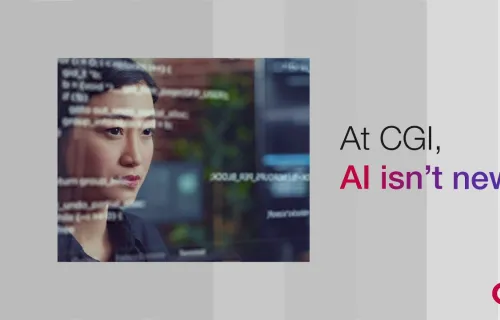The Virtual Pompidou Centre, France
The Pompidou Centre was an initiative of President Georges Pompidou who wished to create a cultural institution in the very heart of Paris, dedicated to modern and contemporary visual art of all types with one guiding principle: to give everyone access to modern day art and creation.
The Pompidou Centre was opened to the public in 1977, set in a typical 20th century building designed by architects Renzo Piano and Richard Rogers. It is home to the largest modern and contemporary art collection in Europe, encompassing visual art, design, architecture, photography and new media.
Over 75,000 pieces of work constitute the museum's collections and exhibitions are renewed on a regular basis. Around twenty monographic or thematic exhibitions are shown each year, accompanied by a varied schedule comprising shows, music, dancing, theatre, performances and cinema, with the aim to explore the interactions between these disciplines and visual art. The Pompidou Centre also encourages the public to attend conferences, meetings and debate cycles.
Under the initiative of its president, Alain Seban, the Pompidou Centre endeavored to improve its digital strategy via the creation of the "Virtual Pompidou Centre," a resolutely innovative Internet-based cultural content broadcasting platform. This resource center was made available online and replaced its old website: www.centrepompidou.fr, in October 2012.
It is available for free on the Internet and already provides users with almost 100,000 digital resources: images, text, video or sound. Every user is able to access all media content produced by the Pompidou Centre (art reproductions, photographs, exhibition posters, interviews, musical recordings, archives, etc.).
The challenge
To give everyone access to all resources produced by the Centre
The Pompidou Centre's guiding principle is to give everyone access to modern day art and creation. Since 1977, the Pompidou Centre has strived to broaden the scope of its audience. The institution, aware of the need for digital technology in its approach, decided to redefine its strategy. With an innovative digital offering, the Pompidou Centre appeals to a much broader audience, and is no longer only frequented by the visitors of its physical form. It is designed for anyone with an interest in modern or contemporary art, whether connoisseur, expert, amateur or just curious.
The Virtual Pompidou Centre conveys the values of the Pompidou Centre: cultural innovation, artistic excellence, proximity and sharing, facilitation of public access to art and contemporary creation.
This project is just as innovative as the Pompidou Centre itself. It forms an integral part of its history, sharing the same DNA. By granting access to all works, archives and resources produced by the Pompidou Centre, this platform acts as an extension to the Centre’s building. One of the architectural principles of the building, in exposing its piping and electric stairs for instance, was to make the invisible visible and the inaccessible accessible.
A resource center for the development of new forms of use
The Pompidou Centre aims to be different from traditional cultural websites. As a real resource center, it redefines the production and broadcasting conditions of cultural content, paving the way for new forms of use.
A new, interactive and customized user experience
It is based on:
- Categorization of content (music, art, photography, cinema, theatre...) by type and genre (audio, video, image, text), including the Institut de Recherche et Coordination Acoustique/Musique (IRCAM)'s audio productions as well as museum works or books from the Kandinsky library
- Semantic structuring of resources implemented by indexing in the form of interconnections between the Centre's collections, programs, cultural activities, research work and the institution's history
- A customized semantic path: the user, with the help of semantic interconnections that naturally and intuitively link contemporary art concepts, is able to build its own "path", which will be unique and adjustable. Consequently, after entering an initial search, the user is able to refine the search criteria. For example a user can browse through the digital resources associated with an artist before turning to resources associated with this artist's works, or with events in which he took part, and can opt for a semantic change at any time and choose a different field of interest.
An innovative technological and open source platform
The Virtual Pompidou Centre is custom-made. Based on various open source solutions, it makes intensive use of innovative semantic web technology. The user is therefore able to access the Pompidou Centre's resources using a simple keyword. A user can browse from one piece of work to another, from an artist to an exhibition, using links between content.
The solution
The Pompidou Centre project promotes close collaboration and co-development. All the parties involved fully comply with the institution's ambitions and are flexible to adjust the project as it develops and as requirements change.
CGI provided a comprehensive service as part of this project, involving strategic advice, change implementation and management. Three actions were carried out simultaneously:
- A "Solution" project: custom-made implementation of the technological platform, from its design to its commissioning and subsequent maintenance
- A "Content" project: qualification of digital resources, their development and implementation of contribution channels. This project allowed for sustainable organization of the resource center's contribution channels, from a technical and human point of view
- An "Assistance" project aiming to provide support during change implementation for various departments, and to help define a sustainable governing model for the Virtual Pompidou Centre.
Finally, CGI integrated the latest web evolutions to the platform.
Semantics constituted a major focus for discussion during the course of this project. Each resource was given an extensive description and was indexed; in other terms, its contents were given a standardized description according to a well-defined charter, allowing each user to fully grasp its meaning. This background work now allows users to change from one resource to the other via free and customized browsing. This innovative dimension has helped the Virtual Pompidou Centre benefit from the latest Internet revolution, data-based Internet, as well as from the development of Open Data (Linked Open Data).
We are proud of having contributed in perpetuating such multidisciplinary approach by providing assistance to the Virtual Pompidou Centre project. Thanks to this new digital platform, all users can not only discover the museum's works for free, but also all of the Centre’s digital productions from their computer.
Our collaboration, our pride
In August 2009, the Pompidou Centre's managers were convinced by:
- Our experience in large project management, which enabled us to provide a better service than specified in the Pompidou Centre's initial specifications. We exceeded its expectations and guaranteed that we can assist it during the choice of its suppliers, as well as in the implementation
- Our know-how in the field of content management and our R&D capacity which allows us to focus together on new uses and economic models
- Our expertise in transitional coaching
- Our active citizenship via our policy in terms of Social and Environmental Responsibility (SER).
One of the stakes of this project was to design a fully open source platform in order to allow broad access to culture. The Pompidou Centre placed its trust in us and together, we produced the Virtual Pompidou Centre.
A success story
Since the first version of the Virtual Pompidou Centre was made available online, millions of connections were recorded during the first months. This is proof that the general public is genuinely enthusiastic about this new resource center.
CGI has since assisted the ETALAB mission, under the prime minister's authority, to design and launch data.gouv.fr. This national open data platform is based on a resource centre and a semantic approach, similar to the Virtual Pompidou Centre.
CGI is recognized as the French leader for content management service providers (source: survey carried out by PAC - Enterprise Content Management), with over 15 years of experience in this field. Certain of what is at stake when it comes to heritage development, CGI showed its commitment to several public strategic programs for the move into the digital age, similar to the National Archives which CGI assisted during the implementation of its new archival information system.
These projects reflect our commitment to administrations regarding their necessary digital evolutions.
Learn more about CGI capabilities for central and federal government.




